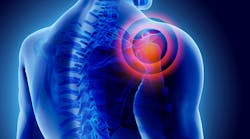According to the National Institute for Occupational Safety and Health, around 20 percent of days of missed work are due to injuries that happen as a result of poor office design. Companies that consider their employees' work environment and how it can affect health and efficiency potentially can reduce workplace injuries.
Most organizations see the frequency of ergonomic-related injuries and costs grow each year. The simple fact is that people need to perform physical work, whether at a factory, store or an office. Statistics from the Bureau of Labor Statistics (BLS) underscore this. For example:
- Work-related musculoskeletal disorders (MSDs) account for one-third of worker injuries and illnesses annually – the most frequently-reported.
- Ergonomics-related injuries require more time off than other workplace injuries and illnesses.
- OSHA and Liberty Mutual also found that overexertion injuries – lifting, pushing, pulling, holding, carrying or throwing – cost businesses $13.8 billion every year.
- Additionally, an estimate of the total economic burden of serious, nonfatal workplace injuries as measured by workers’ compensation costs is nearly $60 billion.
Turning Losses into a Win-Win
Creating operations based on good design that benefits the entire workforce is an easier solution than you might think. One of the effective ways to do this is through a continuous improvement method known as a kaizen event.
Kaizen is a Japanese word that means “good change.” These events help make employees’ jobs safer and more efficient through the study of their work activities and small, simple improvements in their environment. The focus is on immediate action rather than longer-term, costly alternatives.
Daily and Long-Term Improvements
Kaizen events can help reduce your total cost of risk and your ergonomic-injury costs while boosting your bottom line and productivity. Take these real-life examples:
- Adjusting the parts bin on an assembly line reduced reaching by 50 percent, which cut ergonomic risk to workers’ shoulders and improved assembly speed by 4 percent.
- Placing pallets closer to the point of use eliminated the need for workers to carry 22-pound boxes 15 feet for over 200 times per shift.
- Lowering employees’ computer monitors reduced backwards neck bending and therefore, neck and upper back discomfort.
While there are numerous ways to tackle ergonomic-related injuries, a kaizen event is a simple and effective approach that enables employees to improve safety and efficiency. When conducted regularly in conjunction with other casualty risk reduction programs, kaizen events can help your organization achieve safety excellence.
About the author: Jeffrey Smagacz is senior vice president and global ergonomist at Marsh.
